How can I model/calculate the behavior from Vin to Iout of the following circuit? (Credits of the picture go to Analog Devices):
Essentially, I am interested in the large signal response, such as a step at Vin.
Using the standard scheme for single loop feedback control systems, I could calculate \$\rm V1/V_{IN}\$, getting \$\rm I_{OUT}\$ from \$\rm V1\$ means then just using Ohm´s law.
Two problems here:
The transfer function should take the form $$T(s) = \frac{\rm{A_0}}{1 + \rm{A_0}B(s)},$$
with \$\rm{A_0}\$ being the open loop gain of the opamp. I wonder, though, how to obtain \$\rm B(s)\$, which is essentially the transfer function form the MOSFET Gate to its source.
Since the MOSFET is clearly non-linear, I also assume that the transfer function is then only a useful information for a given DC bias point at the gate with an overlay of very small AC signal variations.
Yes, I can simulate the behavior very easily using some spice program, but at least I would like to compare simulation results with some analytical solution. So: Any ideas on how to obtain such as "large signal transfer function" that is valid during the input voltage step?
